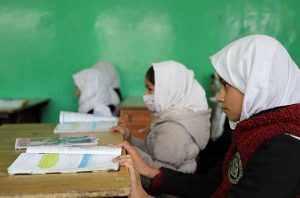Statement: Education Cannot Wait Director Calls for Immediate Return to Education for Girls in Afghanistan
 26 Maret 2022
26 Maret 2022

This statement is attributed to Yasmine Sherif, Director of Education Cannot Wait (ECW), the UN’s global fund for education in emergencies and protracted crises.
By External Source
Mar 25 2022 (IPS-Partners)
Despite the assurance that they are “committed to the right to education of all citizens,” Afghanistan’s de facto authorities announced this week that they will not allow girls to attend secondary school until further notice.
To support a peaceful and prosperous future for all Afghans, the de facto authorities must ensure the right to education for all children and adolescents across the country. Ensuring that both girls and boys can return to school – including the resumption of adolescent girls’ access to secondary education – is key for the development of the country.
While boys have been able to access primary and secondary school since the Taliban takeover in August 2021, girls’ access to education has been limited to primary school in most of Afghanistan’s provinces. With this announcement, an entire generation of Afghan children and adolescents could be left behind.
Afghanistan faces a catastrophic humanitarian crisis, with over half the population – 24.4 million people – in need of humanitarian and protection assistance. Today, an estimated 8 million school-aged children need urgent support to access education.
This is a crucial moment for the de facto authorities to make good on their commitments. The time has come to fulfill the right to education for all girls and boys in the country. Knowledge is the pillar of any flourishing nation.
ECW has been supporting community-based education in Afghanistan since 2018, together with our strategic partners in the UN system, donors and civil society, reaching children in the most challenging contexts. The ECW-supported Multi-Year Resilience Programme focused on the most marginalized children, including a strong focus on female teachers and girls’ education, with 60% of all children reached being girls.
